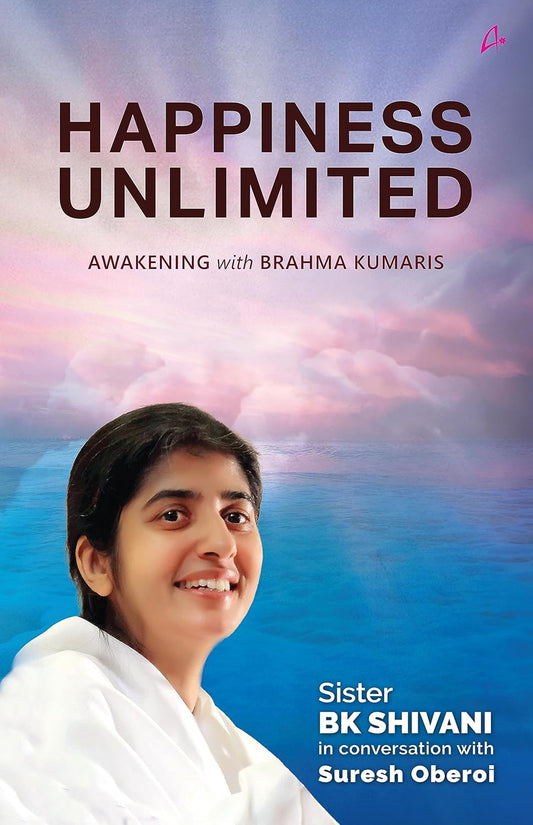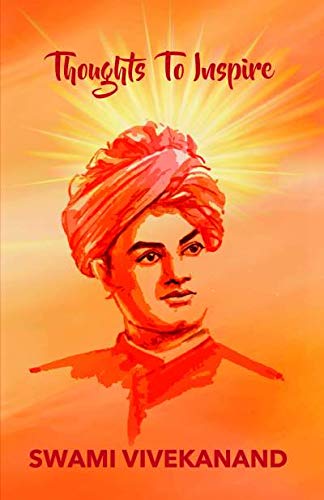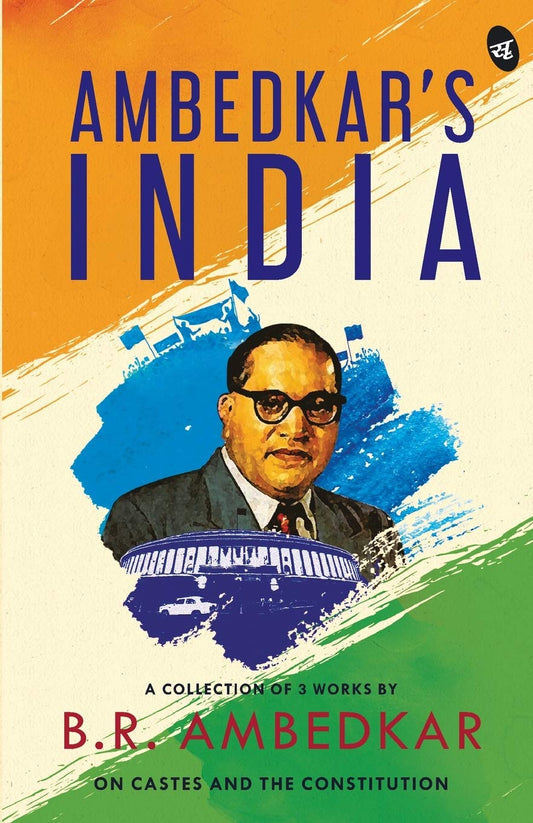Have you ever searched for a favorite book online only to find yourself staring at dozens of confusing options? "First Edition," "Revised Edition," "International Edition," "Paperback Edition" – and all at wildly different prices ranging from ₹199 to ₹2,999 for what appears to be the same book? If you've ever felt overwhelmed trying to understand what a book edition is and why it matters, you're not alone.
Recent surveys show that over 60% of Indian online book buyers admit to feeling confused about book editions, often leading to purchasing decisions they later regret. Some end up paying premium prices for features they don't need, while others buy cheaper versions only to discover missing content or poor quality that affects their reading experience.
The confusion is understandable – publishers use various terms inconsistently, and online stores don't always explain the differences clearly. Many Indian readers have purchased what they thought was a complete novel, only to receive an abridged version, or paid extra for a "special edition" without understanding what made it special.
In this comprehensive guide, you'll discover everything about book editions – from understanding basic terminology to making smart purchasing decisions that save money while ensuring you get exactly what you want. By the end, you'll confidently navigate any online bookstore and choose the perfect edition for your needs and budget.
What Is a Book Edition?
A book edition is essentially a specific version or printing of a book that has particular characteristics, content, or physical features that distinguish it from other versions of the same work. Think of book editions like different models of the same smartphone – the core product remains the same, but each version offers different features, quality levels, and pricing.
A book edition encompasses everything from the content inside to the physical appearance outside. This includes the paper quality, cover design, font size, additional content like forewords or appendices, illustrations, and even the geographical market for which it's intended. Each time a publisher makes significant changes to any of these elements, they create a new edition.
The concept becomes clearer when you consider that books are commercial products, just like any other item you might purchase online. Publishers create different editions to serve various markets, price points, and consumer preferences. A luxury hardcover edition with premium paper and illustrations serves readers who value quality and collectability, while a budget paperback edition prioritizes affordability and portability.
Book editions also reflect the evolution of the work itself. Authors often revise content, publishers update formatting for modern readers, and technological advances enable new features like enhanced digital versions or interactive elements. Each significant change justifies creating a new edition with its unique characteristics.
Understanding editions helps you make informed purchasing decisions. When you know what differentiates a ₹299 edition from a ₹999 version of the same book, you can choose based on your actual needs rather than confusion or assumption. This knowledge is particularly valuable for Indian readers who are often price-sensitive and want maximum value from their book purchases.
The edition also affects the book's long-term value, resale potential, and reading experience. Some editions become collector's items, while others are designed for practical, everyday reading. Knowing these differences ensures you invest in the right version for your specific purposes.
The Publishing Process Behind Different Versions
Understanding how publishers create different book editions reveals why so many versions exist and helps you make sense of the seemingly endless options available when shopping online.
The Initial Publication Process: When an author completes a manuscript, publishers evaluate market demand and create a publication strategy. This strategy typically includes multiple edition formats to maximize reach across different reader segments. Publishers consider factors like production costs, target demographics, distribution channels, and competitive pricing when planning various editions.
The first decision involves format types – hardcover, paperback, digital, or audio versions. Each format requires different production processes, costs, and pricing strategies. Hardcover editions typically launch first at premium prices, followed by paperback versions months or years later at lower price points.
Content and Design Variations: Publishers often modify content for different editions based on target audiences or market requirements. Academic editions might include additional study materials, discussion questions, or supplementary essays. International editions could feature cultural adaptations or language modifications suitable for specific regions.
Design elements vary significantly between editions. Premium editions feature high-quality paper, special covers, artwork, or unique typography. Budget editions prioritize cost-effectiveness with standard paper, simple covers, and basic formatting. These design choices directly impact production costs and final retail prices.
Geographic and Market Considerations: Publishers create region-specific editions to address local market conditions. Indian editions often feature different pricing, paper quality, or even content modifications to suit local preferences and purchasing power. These regional book editions explain why the same book might cost ₹399 in India but much more in international markets.
Timing and Strategic Releases: Publishers strategically time different edition releases to maximize profits and market penetration. Limited first editions create urgency and justify premium pricing. Mass market editions released later capture price-sensitive customers who waited for affordable options.
Digital and Print Integration: Modern publishing includes digital editions alongside traditional print versions. Digital editions can be updated more easily, leading to frequent revisions and enhanced versions. Some publishers offer bundled packages that include both print and digital versions, creating hybrid editions that serve different consumption preferences.
This complex process explains why browsing for books online reveals so many options. Each edition serves specific market needs, and understanding these needs helps you identify which version aligns with your preferences and budget.
Types of Book Editions: Categories and Characteristics
The book edition types available in today's market serve different purposes, budgets, and reading preferences. Understanding each category helps you identify the best option for your specific needs.
First Edition and Special Editions
First Edition represents the initial publication of a book, often considered the most valuable for collectors and enthusiasts. These editions typically feature the original content exactly as the author intended, without later revisions or corrections. First editions often cost ₹800-₹2,500 depending on the book's popularity and print run size.
Limited Edition books are produced in small quantities, often featuring special materials, unique artwork, or exclusive content. Publishers might create only 1,000-5,000 copies, making them collectible items. These editions frequently include extras like author signatures, special illustrations, or premium binding materials.
Anniversary Editions commemorate significant milestones like a book's 25th or 50th publication anniversary. Publishers often enhance these versions with new introductions, author interviews, historical context, or restored original artwork. Prices typically range from ₹599 to ₹1,499 for popular titles.
Collector's Editions target serious fans and bibliophiles with premium materials, unique designs, and exclusive content. These might include hardcover binding, dust jackets, special paper, or additional materials like maps, character guides, or author commentary.
Format-Based Editions
Hardcover Editions feature rigid covers, high-quality paper, and durable binding designed for longevity. These editions typically cost ₹899-₹2,999 but offer a superior reading experience and shelf appeal. Hardcovers are ideal for books you plan to keep permanently or reference frequently.
Paperback Editions use flexible covers and standard paper to reduce costs and weight. Mass market paperbacks cost ₹199-₹499 and prioritize portability and affordability. Trade paperbacks offer a middle-ground with better paper quality and larger formats while maintaining reasonable prices around ₹399-₹799.
Large Print Editions feature bigger fonts and spacing for readers with vision challenges or those who prefer easier reading. These editions typically cost slightly more than standard versions due to increased page counts but provide significantly improved readability.
Content-Modified Editions
Abridged Editions contain shortened versions of the original work, removing certain sections to reduce length or complexity. These are common for classic literature in educational markets, typically costing ₹199-₹399. Always check if an edition is abridged to avoid disappointment.
Unabridged Editions contain the complete original text without cuts or modifications. These are essential for academic study or when you want the full author experience. Prices vary widely based on format and publisher.
Annotated Editions include additional explanatory notes, commentary, or analysis alongside the original text. These are particularly valuable for classic literature, historical works, or complex academic texts. Educational annotated editions typically cost ₹499-₹999.
Revised Editions feature updated content, corrections, or additional material added by the author or publisher. Technical books, textbooks, and reference materials frequently release revised editions to incorporate new information or fix errors from previous versions.
Understanding these categories ensures you select editions that match your reading goals, budget constraints, and long-term ownership plans.
Benefits of Understanding Book Editions for Smart Shopping
Knowing what a book edition is and understanding the differences between various versions provides significant advantages for Indian book buyers who want to maximize value and satisfaction from their purchases.
Significant Cost Savings and Budget Optimization: Understanding editions helps you avoid overpaying for features you don't need while ensuring you don't miss important content or quality aspects you do value. A reader seeking entertainment might choose a ₹299 paperback instead of a ₹999 hardcover, saving ₹700 without sacrificing the core reading experience.
Conversely, students or professionals needing reference materials might invest in higher-quality editions that withstand frequent use and provide better long-term value. Knowing when to spend more and when to save requires understanding what each edition offers.
Avoiding Common Purchasing Mistakes: Many Indian readers accidentally purchase abridged versions when they wanted complete texts, or buy expensive international editions when affordable local versions exist. Understanding edition terminology prevents these costly mistakes that lead to dissatisfaction and additional purchases.
Collecting and Investment Potential: Some book editions appreciate over time, particularly first editions of popular works or limited releases. Collectors who understand edition significance can make strategic purchases that serve both reading pleasure and potential investment returns.
Enhanced Reading Experience: Different editions offer varying reading experiences based on paper quality, font size, illustrations, and additional content. Academic readers benefit from annotated editions with explanatory notes, while casual readers might prefer standard editions without distracting commentary.
Gift-Giving Confidence: When purchasing books as gifts, understanding editions ensures you select appropriate versions for recipients. A book lover might appreciate a premium hardcover edition, while someone with limited space might prefer a compact paperback version.
Digital vs. Physical Decision Making: Edition knowledge helps you evaluate whether digital versions offer sufficient value compared to physical editions. Some books benefit significantly from physical format features like illustrations, maps, or special layouts that don't translate well to digital formats.
Academic and Professional Requirements: Students and professionals often need specific editions for courses, citations, or professional development. Understanding edition differences ensures you purchase versions that meet academic or workplace requirements without unnecessary expense.
Storage and Portability Considerations: Indian homes often have limited storage space, making edition choice crucial for practical reasons. Understanding size, weight, and format differences helps you build a personal library that fits your living situation while providing optimal reading experiences.
This knowledge transforms book shopping from a confusing, potentially costly experience into a confident, strategic activity that consistently delivers satisfaction and value.
How Book Editions Are Published and Distributed
Understanding the book publishing process and distribution methods helps explain why certain editions cost more, take longer to arrive, or have limited availability in the Indian market.
Traditional Publishing Timeline: Publishers typically release hardcover editions first, usually 6-12 months before paperback versions. This staged release strategy maximizes revenue by capturing readers willing to pay premium prices for immediate access, then serving price-sensitive customers with affordable options later. Understanding this timeline helps you decide whether to buy immediately or wait for cheaper editions.
Print Run Economics: Publishers determine print quantities based on expected demand, which directly affects pricing and availability. Popular books might have large print runs with competitive pricing, while niche titles have smaller runs with higher per-unit costs. Limited editions intentionally restrict supply to create exclusivity and justify premium pricing.
Distribution Channel Variations: Different editions often flow through different distribution channels. Premium editions might sell exclusively through specialty bookstores or online platforms, while mass market editions appear in general retail outlets. Online platforms typically offer a wider selection than physical stores, explaining why internet shopping reveals so many options.
Regional Publishing Rights: International publishers often license content to Indian publishers for local edition creation. These Indian book editions feature different covers, paper quality, and pricing structures suited to local market conditions. Regional editions explain why the same book appears at dramatically different price points depending on the publisher.
Quality Control and Production Standards: Different editions undergo varying quality control processes. Premium editions receive more attention to binding, paper selection, and print quality, while budget editions prioritize cost efficiency over luxury features. Understanding these production differences helps set appropriate expectations for each price point.
Digital Edition Integration: Modern publishers increasingly coordinate digital and physical edition releases. Some offer digital editions simultaneously with hardcover releases, while others delay digital versions to protect physical sales. Enhanced digital editions might include multimedia content, interactive features, or regular updates that justify higher pricing.
Seasonal and Strategic Timing: Publishers' time edition releases around holidays, academic calendars, or cultural events. Back-to-school seasons see increased textbook edition releases, while holiday periods feature gift-worthy premium editions. Understanding these patterns helps you find better deals by timing purchases strategically.
Inventory Management and Remaindering: When editions don't sell as expected, publishers often liquidate inventory through discount channels. These "remainder" editions offer identical content at significantly reduced prices, though they might have small markings indicating their remainder status. Savvy shoppers can find excellent deals on quality editions through these channels.
Author Involvement in Edition Decisions: Authors often influence edition creation, particularly for revised or annotated versions. Understanding an author's involvement helps assess whether new editions offer meaningful improvements or are primarily marketing-driven releases.
This complex ecosystem explains the variety and pricing structures you encounter when shopping for books online, enabling more strategic purchasing decisions.
Advantages for Indian Book Buyers
Book editions offer specific benefits that align perfectly with Indian readers' preferences, economic considerations, and cultural reading habits.
Regional Pricing and Affordability: Indian editions of international books typically cost 40-70% less than imported versions while maintaining identical content. A bestselling novel that costs ₹1,999 as an imported edition might be available as an Indian edition for ₹399, making quality literature accessible to middle-class readers who couldn't afford international pricing.
Publishers create budget-friendly editions specifically for price-sensitive Indian markets, often using local paper and printing facilities to reduce costs without compromising readability. These editions democratize access to world-class content regardless of economic background.
Educational Edition Availability: India's large student population benefits from specialized educational editions that include study guides, simplified language, or culturally relevant examples. Publishers create versions of classic literature with Indian context annotations, making complex works more accessible to local students.
Competitive exam preparation books frequently offer multiple editions – comprehensive versions for serious aspirants and condensed versions for quick revision. Understanding these options helps students choose appropriate materials for their preparation level and budget.
Language and Cultural Adaptations: Some international books receive Indian editions with cultural context explanations, currency conversions, or examples relevant to Indian readers. Business and self-help books particularly benefit from such adaptations, making advice more applicable to Indian professional and personal contexts.
Shipping and Availability Benefits: Local edition purchases eliminate international shipping delays and customs complications. Indian editions ship faster, cost less for delivery, and don't require foreign exchange transactions that some payment methods complicate.
Support for Indian Authors and Publishers: Choosing Indian editions often supports the local publishing industry and authors. Many international books licensed to Indian publishers include Indian author introductions or commentary, providing additional value while supporting domestic literary talent.
Seasonal Festival Editions: Publishers create special editions around Indian festivals like Diwali or academic seasons, often featuring attractive packaging suitable for gifts or personal celebration. These editions balance cultural relevance with commercial appeal.
Multi-format Bundle Options: Indian publishers increasingly offer bundle deals combining physical and digital editions at attractive prices. A complete package might include paperback, e-book, and audiobook versions for ₹699, providing multiple consumption options for modern readers who switch between formats.
Community and Book Club Integration: Popular books often receive Indian editions with discussion guides, book club questions, or social media integration features that connect local readers. These community-focused additions enhance the reading experience beyond just consuming content.
Understanding these advantages helps Indian readers make choices that maximize value while supporting local industry and accessing content in formats that suit the Indian lifestyle and economic realities.
Smart Shopping Tips for Book Edition Purchases
Making intelligent book edition purchases requires specific strategies that ensure you get the best value, avoid common pitfalls, and choose versions that truly meet your needs.
Research and Comparison Strategies
Compare Content Differences Carefully: Before purchasing, verify whether different editions contain identical content or if some versions are abridged, annotated, or modified. Read product descriptions thoroughly and look for mentions of "complete," "unabridged," or "original text." Many disappointments arise from assuming all editions contain the same content when they actually differ significantly.
Check page counts between editions as a quick indicator of content differences. A classic novel with one edition showing 200 pages and another showing 400 pages likely indicates an abridged version versus a complete one.
Evaluate Price-to-Value Ratios: Don't automatically choose the cheapest option without understanding what you're sacrificing. A ₹199 edition might seem attractive, but if it uses poor paper that makes reading difficult or a binding that falls apart quickly, a ₹399 edition might provide better long-term value.
Consider your intended use when evaluating prices. Books for one-time reading can justify budget editions, while reference materials or books you'll revisit benefit from higher-quality editions that withstand repeated use.
Read Customer Reviews Strategically: Focus on reviews that specifically mention edition characteristics rather than just content opinions. Look for comments about paper quality, binding durability, print clarity, and size/weight considerations. Reviews mentioning "pages fell out" or "text too small to read comfortably" provide valuable edition-specific insights.
Pay attention to reviews comparing different editions of the same book, as these provide direct comparative information about value and quality differences.
Timing and Seasonal Considerations
Understand Release Patterns: New books typically launch as expensive hardcover editions, followed by cheaper paperback versions 6-12 months later. If you're not in a hurry to read the latest releases, waiting for paperback editions can save 50-70% without missing any content.
Publishers often discount older editions when new revised versions launch. This creates opportunities to purchase previous editions at reduced prices if the updates aren't essential for your needs.
Take Advantage of Festival Sales: Indian online retailers frequently offer significant discounts during festivals like Diwali, Dussehra, or back-to-school seasons. Planning book purchases around these sales can yield savings of 30-50% on premium editions.
Educational editions see particularly steep discounts during academic season changes when retailers clear inventory for new curriculum requirements.
Quality Assessment Techniques
Identify Edition Information: Learn to locate and interpret edition information on product pages. Look for publication dates, publisher names, ISBNs, and specific edition designations. This information helps you verify you're purchasing the intended version and compare across different sellers.
Newer editions of technical books or textbooks typically justify higher prices through updated information, while newer editions of classic literature might not offer significant advantages over established versions.
Assess Physical Characteristics: When quality matters, pay attention to specifications like paper weight, binding type, and cover materials mentioned in product descriptions. Terms like "premium paper," "sewn binding," or "dust jacket included" indicate higher-quality construction that justifies increased prices.
Consider size and weight specifications if portability matters. Large format editions might be beautiful for home reading, but impractical for commuting or travel.
Digital vs. Physical Decision Framework
Evaluate Format-Specific Advantages: Some books benefit significantly from physical formats – art books, cookbooks, reference materials, or texts with complex diagrams often lose value in digital formats. Conversely, fiction, self-help, or travel books might work equally well in digital formats while offering additional benefits like searchability and portability.
Consider your reading habits and preferences. If you highlight frequently, take notes, or prefer the tactile experience of physical books, investing in quality physical editions makes sense despite higher costs.
Bundle and Package Opportunities: Look for publishers offering multi-format packages that include both physical and digital versions. These bundles often cost only slightly more than single-format purchases while providing consumption flexibility.
Some platforms offer "digital upgrade" options that add e-book access to physical purchases for a small additional fee, combining the benefits of both formats economically.
By applying these strategic approaches, you'll consistently make satisfying book purchases that align with your reading goals, budget constraints, and quality expectations.
Final Thoughts
Understanding what is a book edition transforms you from a confused browser into a confident, strategic book buyer who consistently makes satisfying purchases that provide excellent value. The knowledge you've gained about different edition types, publishing processes, and smart shopping strategies empowers you to navigate even the most complex online bookstore with clarity and purpose.
Remember that book editions exist to serve different needs, preferences, and budgets – there's no universally "best" edition, only the right edition for your specific situation. Whether you're a student seeking affordable textbooks, a collector looking for premium versions, or a casual reader wanting good value, understanding editions ensures you choose wisely every time.
The Indian book market offers incredible opportunities for savvy shoppers who know how to identify quality editions at reasonable prices. By applying the research techniques, timing strategies, and evaluation methods outlined in this guide, you'll consistently find books that exceed your expectations while staying within your budget.
Start applying these insights to your next book purchase, but approach shopping with the confidence that comes from understanding what you're buying and why. Your newfound edition knowledge will not only save money and prevent disappointment but also enhance your overall reading experience through better-informed choices.
What is a Book Edition FAQ's
What's the difference between a first edition and a first printing?
A first edition refers to the initial publication of a book with specific content and design, while a first printing refers to the first batch of copies produced from that edition. A first edition might have multiple printings if demand exceeds the initial print run, with later printings being less valuable to collectors.
Are expensive book editions always better than cheaper ones?
Not necessarily. Higher prices often reflect premium materials, special features, or limited availability rather than better content. For most readers, mid-priced editions offer the best balance of quality and value. Evaluate what you're getting for the extra cost before choosing expensive editions.
How can I tell if a book is abridged or complete?
Look for terms like "unabridged," "complete," or "original text" in the product description. Compare page counts between different editions – significantly shorter versions are likely abridged. When in doubt, contact the seller or check the publisher's websites for detailed edition information.
Why do Indian editions cost less than international versions?
Indian editions are priced according to local purchasing power and market conditions. Publishers use regional printing facilities, different paper grades, and local distribution networks to reduce costs while maintaining content quality. This makes books more accessible to Indian readers.
Should I wait for paperback editions to save money?
If you're not in a hurry and don't need premium features, waiting for paperback editions can save 40-60% on the cost. However, popular books might take 6-18 months for paperback release, and some titles never get paperback versions if demand is limited.
How do I identify quality book editions when shopping online?
Look for specific information about paper quality, binding type, publisher reputation, and customer reviews mentioning durability. Established publishers typically maintain higher quality standards. Be wary of extremely low prices that might indicate poor production quality or unauthorized copies.









